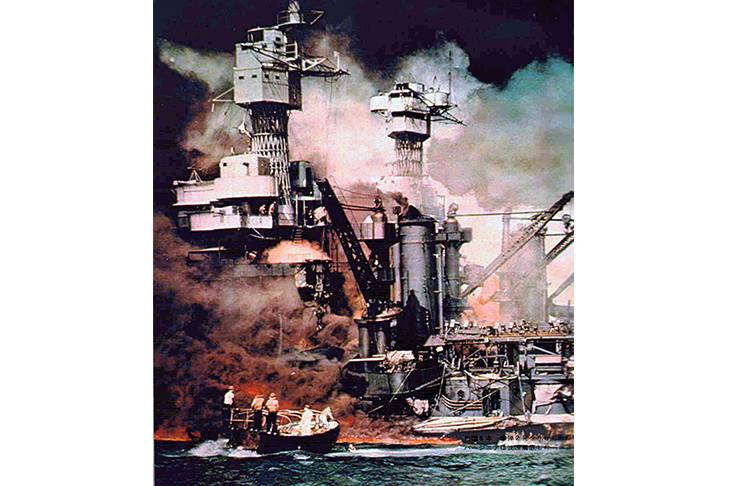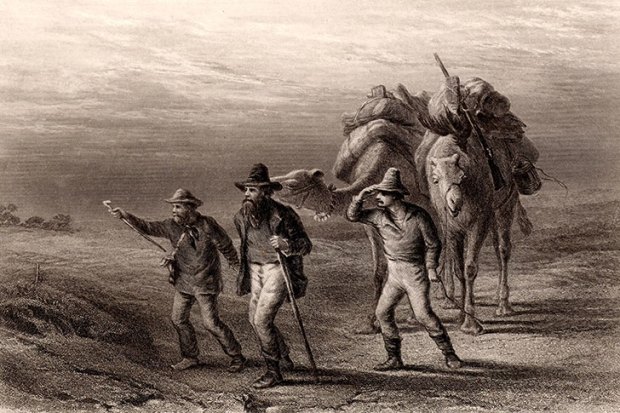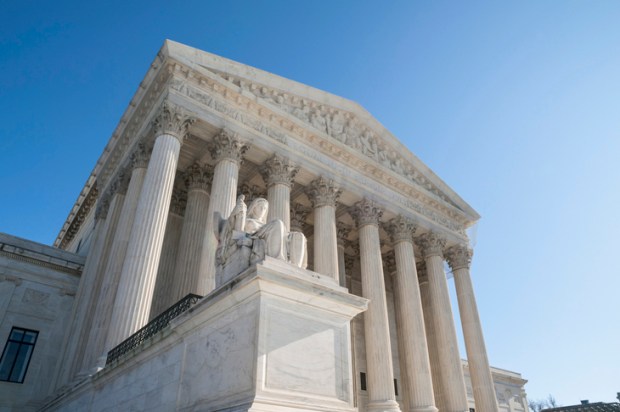On 7 December 1941, without declaration of war, 350 Japanese carrier-borne aircraft struck at the US Pacific Fleet at anchor in Pearl Harbor, Hawaii — in President Franklin D. Roosevelt’s ringing words, ‘a date that will live in infamy’. For the 75th anniversary, Craig Nelson, a New York Times journalist, has, says his publisher, produced ‘a definitive account’.
I disagree. Indeed, if this book were a motor car (or ‘automobile’, for it is a re-print of the US edition, with American usage and spelling), it would have to be recalled for extensive safety modifications and replacement parts. The errors, mis-understandings and omissions are markedly misleading, sowing doubt about the accuracy of the admittedly ‘gripping’ (publisher’s words again) account of the actual attack, and undermining the credibility of the analysis of cause and effect.
Some of the technical errors are trivial enough, though indicative — warships ‘cabling’ each other, for example, in the age of wireless telegraphy. Others are more egregious. In the 1930s, writes Nelson, the Japanese developed a ‘two-foot-long, oxygen-powered torpedo that could travel 24 miles and was twice as effective in speed, in distance, in targeting and explosive power as anything American-made’. Just how does the author suppose that torpedo technology could have reached such a degree of miniaturisation, especially of explosive power, even now, let alone then?
What he is almost certainly referring to is the ‘Long Lance’, which had a diameter of two feet and a length of nine metres (pretty evident in the name) and weighed nearly three tons. But it could not be air-launched, for besides the payload, the oxygen propellant was too unstable. Its range of 24 miles, in the days of unguided torpedoes, gave it no advantage except in a game of fire and hope; there was no superiority in ‘targeting’. All this might be passed over as mere detail, except that this is a ‘definitive book about the boldest carrier air strike in history’.
Nelson is equally at sea when it comes to the genesis of the big ships at the heart of the story: the dreadnoughts. In the Russo-Japanese War of 1904–5 (when Moscow was the Russian capital, he believes), ‘Togo [the Japanese naval C-in-C] was the world’s only admiral with dreadnought experience in an actual engagement’. But the first dreadnought was not launched until 1906 — by Britain, and eponymously. Indeed, the battle of Tsushima, Togo’s humiliation of the Russian Baltic fleet after it had steamed halfway round the world, was really the dreadnought’s moment of conception — its lessons were behind the whole theory of naval warfare which led Britain and Germany to Jutland in 1916 (not mentioned), and which persisted in the minds of the Japanese in the 1930s. Nelson ascribes the faith the Japanese put in the ‘decisive battle’ to the US naval theorist Alfred Thayer Mahan, but fails even to mention Japan’s own Mahan, Sato Tetsutaro.
An instinct for the realities of war should also have told him that a carrier-borne force of about 50 bi-planes bombing Shanghai in a punitive raid in 1932 could not have killed ‘hundreds of thousands’, when at Dresden in 1945 1,300 US and British medium and heavy bombers killed ‘only’ (as Unity Mitford might have said) 25,000.
Nelson even confuses his indexer into thinking that there was an earlier Russo-Japanese war, in 1853, yet omits to mention the fighting along the border of Manchuria in 1939, in which the Japanese admitted to losses of 20,000, but which were possibly three times that number — fighting which influenced their decision to turn south in 1940.
Nelson thinks the Germans continued to have colonial possessions in Asia after Versailles, contributing to Japan’s sense of being surrounded, and describes Oahu (in effect Pearl Harbor) as ‘America’s most significant post-Great War foreign [sic] base’. A good copy editor should have picked that up, as well as, inter alia, that a howitzer is not an item of boy’s clothing, nor that having spent decades in Washington, Cordell Hull, the secretary of state, had developed ‘the hair of an éminence grise’.
What is not a careless misprint, however, for it is central to Nelson’s narrative of 1940, is that on 23 September 1940, Japanese troops invaded Malaya, French Indochina and the Dutch East Indies, so that ‘Japan now controlled British Malaya’s acres of rubber plantations, French Indochina’s sinuous veins of tin and, most important, the Dutch East Indies’ bounteous cache of oil’. If only the British army in Malaya had indeed had such delaying power: 17 months until the fall of Singapore, rather than, in reality, barely nine weeks. The Japanese attack on Malaya, for obvious reasons, was almost simultaneous with the attack on Pearl Harbor, and their attack on the Dutch East Indies came a month later. What does the author suppose was happening between London and Washington during the time that Britain’s key colony was supposed to be in Japanese hands?
All this is a pity, to say the least, for if — if — Nelson is accurate in his account of the confusion, dereliction or misjudgment among politicians and senior officers before Pearl Harbor, or the ducking and diving afterwards, then the book has some title to the publisher’s claims. But its defects illustrate the problem of anniversaries — seen closer to home in the recent plethora of books on Waterloo and the Somme: the ‘visiting author’.
Got something to add? Join the discussion and comment below.
Get 10 issues for just $10
Subscribe to The Spectator Australia today for the next 10 magazine issues, plus full online access, for just $10.
You might disagree with half of it, but you’ll enjoy reading all of it. Try your first month for free, then just $2 a week for the remainder of your first year.














Comments
Don't miss out
Join the conversation with other Spectator Australia readers. Subscribe to leave a comment.
SUBSCRIBEAlready a subscriber? Log in